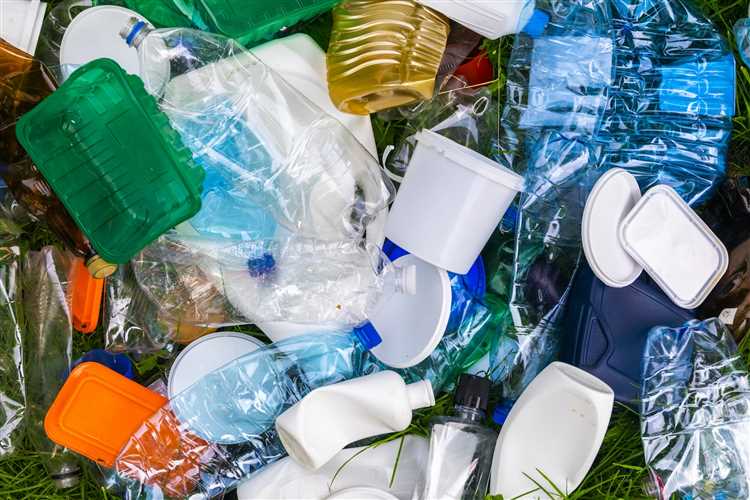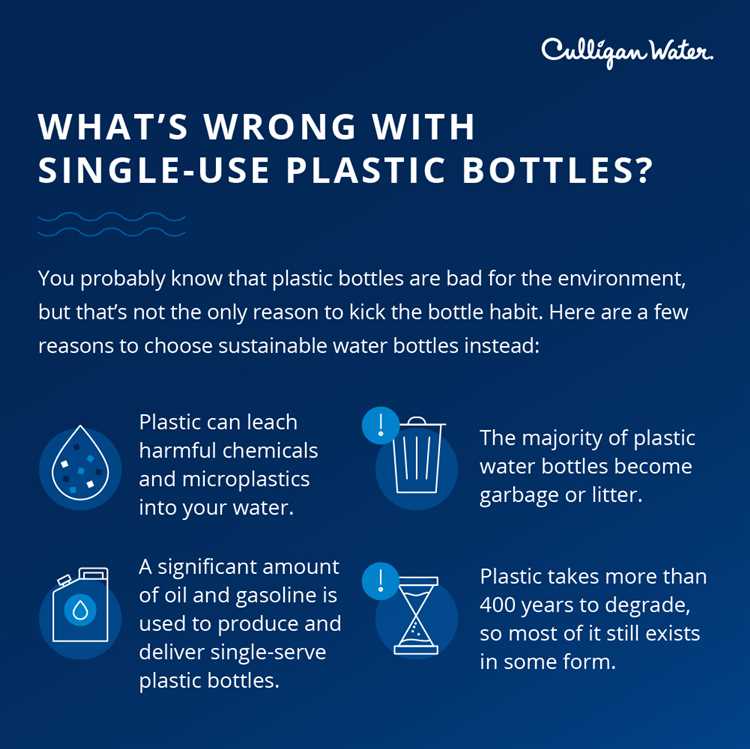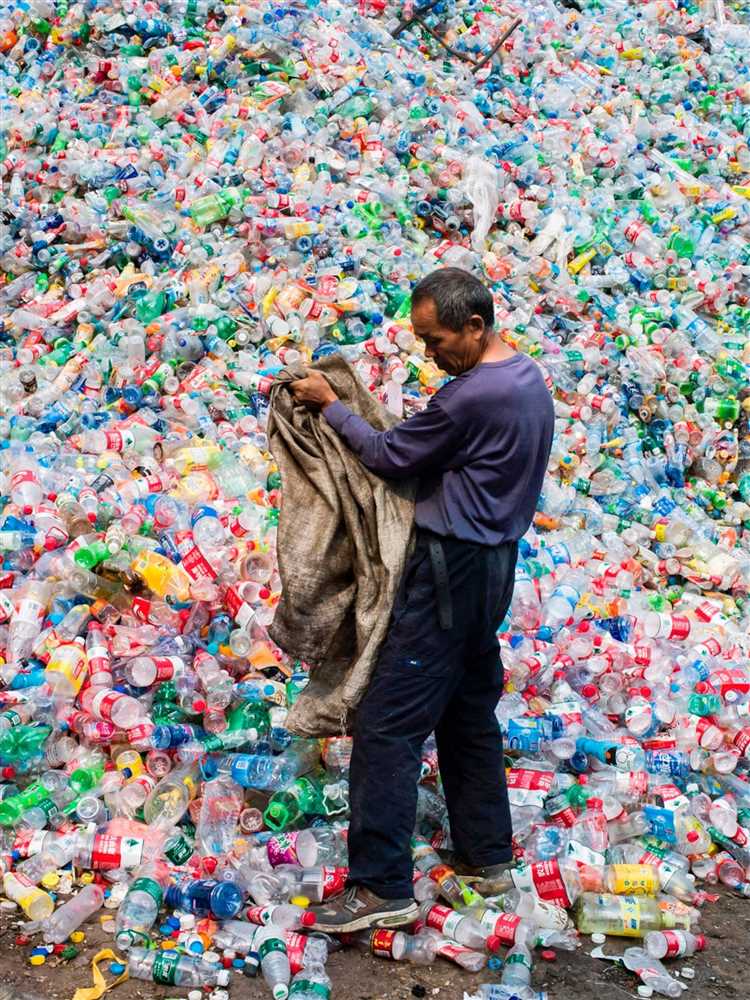
Plastic has become an integral part of our daily lives, offering convenience and practicality in nearly every aspect. From food packaging to household items, plastic is everywhere. However, its widespread use has raised significant concerns about its impact on the environment and human health.
One of the main concerns regarding plastic is its durability. Plastic takes hundreds, if not thousands, of years to break down naturally. As a result, plastic waste accumulates in landfills and oceans, posing a serious threat to wildlife and ecosystems. Sea turtles mistake plastic bags for jellyfish, and birds unknowingly feed their chicks small pieces of plastic, leading to injury or even death.
Furthermore, plastic pollution affects not only wildlife but also humans. Harmful chemicals, such as bisphenol A (BPA) and phthalates, can leach out of plastic products and contaminate food and water supplies. These chemicals have been linked to various health issues, including hormonal imbalances, reproductive problems, and developmental disorders.
In recent years, there has been a growing awareness about the negative consequences of plastic use. People are becoming more cautious about their consumption habits and actively seeking alternatives. Governments and organizations are implementing policies to reduce single-use plastics and encourage recycling.
- The Impact and Concerns of Plastic in Today’s World
- Environmental Impact
- Human Health Concerns
- The Pervasive Presence of Plastic
- Environmental Consequences of Plastic Waste
- Health Risks Associated with Plastic
- Plastic Recycling Efforts and Challenges
- Alternative Solutions to Plastic
- Individual and Collective Responsibilities
- Individual Responsibilities
- Collective Responsibilities
- Conclusion
- Q&A:
- Why is plastic still a concern in today’s world?
- What are the environmental impacts of plastic?
- How does plastic affect marine life?
- What are some alternatives to single-use plastics?
- How can individuals help reduce plastic pollution?
The Impact and Concerns of Plastic in Today’s World
Plastic has become an integral part of our modern lives, but its impact on the environment and human health cannot be ignored. The rise of plastic usage in various industries has led to severe consequences that pose a significant concern in today’s world.
Environmental Impact
Plastic pollution has become a global crisis, with devastating effects on our ecosystems. It is estimated that over 8 million metric tons of plastic waste enter our oceans each year, causing harm to marine life and disrupting delicate ecosystems. The slow decomposition rate of plastic means that it can persist in the environment for hundreds of years, further exacerbating the problem.
Additionally, the production of plastic releases harmful greenhouse gases, contributing to climate change. The extraction of fossil fuels required for plastic production leads to habitat destruction and contributes to carbon emissions, further degrading our environment.
Human Health Concerns
Plastic pollution is not only a threat to the environment but also to human health. Microplastics, tiny particles that result from the degradation of larger plastic items, have been found in food and drinking water sources. Studies have shown that these microplastics can enter our bodies and have adverse effects on our health, potentially causing hormonal disruptions and other chronic diseases.
Furthermore, the production and incineration of plastic waste release toxic chemicals into the air, which can contaminate the surrounding environment and pose a risk to human health. These chemicals have been linked to respiratory problems, developmental issues, and even certain types of cancers.
It is crucial that we address the impact and concerns of plastic in today’s world and take immediate action. Governments, industries, and individuals have a responsibility to reduce single-use plastic consumption, promote recycling and develop sustainable alternatives. By doing so, we can help mitigate the detrimental effects of plastic pollution and protect our planet for future generations.
The Pervasive Presence of Plastic
Plastic, with its wide range of applications and convenience, has become an integral part of our daily lives. From the moment we wake up until we go to sleep, we are surrounded by plastic items. It is present in our homes, schools, workplaces, and even in the great outdoors.
Walk into any grocery store, and you’ll find plastic packaging for almost every product – fruits, vegetables, meat, and dairy. Plastic bags and containers are used to store and transport our food. Even the water we drink is often bottled in plastic. It’s hard to imagine a world without plastic, as it has become deeply embedded in our consumer culture.
Plastic’s presence doesn’t end with the items we use on a daily basis. It extends to our oceans, rivers, and landscapes. Plastic waste is a major environmental issue, with millions of tons of it ending up in the world’s water bodies every year. This plastic waste poses a significant threat to marine life, as animals can mistake it for food or become entangled in it. Additionally, plastic takes hundreds of years to break down, causing long-term harm to ecosystems.
Not only is plastic present in our material world, but it has also found its way into our bodies. Microplastics, tiny plastic particles less than 5 millimeters in size, have been found in various food and water sources. These particles can enter our bodies through ingestion or inhalation and have the potential to accumulate over time, raising concerns about their impact on human health.
While plastic has undoubtedly brought convenience and efficiency to our lives, its pervasive presence raises important questions about sustainability and the need for alternative solutions. As individuals and as a society, it’s crucial that we explore ways to reduce our reliance on single-use plastics, promote recycling and waste management practices, and support innovations that offer environmentally friendly alternatives.
Environmental Consequences of Plastic Waste
Plastic waste is one of the major environmental concerns facing the world today. The consequences of excessive plastic usage and improper disposal are profound, affecting both terrestrial and marine ecosystems.
Plastics, especially single-use items like bottles, bags, and straws, are not biodegradable. Instead, they break down into smaller fragments known as microplastics. These microplastics can persist in the environment for centuries, accumulating in soil, water bodies, and even the air we breathe.
One significant consequence of plastic waste is the pollution of water bodies, such as rivers, lakes, and the oceans. Plastic debris often end up in these water sources, posing a threat to marine life. Marine animals may mistake plastic for food or become entangled in it, resulting in injury or death. The presence of microplastics in water also has a detrimental effect on aquatic organisms and ecosystems, disrupting their natural balance.
Plastic waste has a direct impact on land ecosystems as well. Improper disposal of plastic waste can lead to the formation of landfills, which release harmful chemicals and toxins into the soil and groundwater. This pollution can then affect plants, animals, and humans in the vicinity, causing health problems and ecosystem degradation.
Furthermore, plastic waste contributes to greenhouse gas emissions when incinerated. The burning of plastic releases carbon dioxide and other harmful gases, contributing to global warming and air pollution. This exacerbates the already pressing issue of climate change.
The consequences of plastic waste extend beyond the physical environment. Plastic pollution also affects the economy and human well-being. The tourism industry, for example, may suffer due to the degradation of natural environments caused by plastic waste. The presence of littered plastic can also decrease property values and impact the overall quality of life in affected areas.
Addressing the environmental consequences of plastic waste requires collective action. Governments, businesses, and individuals all play a role in reducing plastic consumption, promoting recycling, and supporting sustainable alternatives. By recognizing the impact of plastic waste on the environment and taking proactive steps towards minimizing it, we can create a cleaner and healthier world for future generations.
Health Risks Associated with Plastic
Plastic poses several health risks to humans and the environment due to the presence of harmful chemicals and the potential for contamination. These risks are a cause for concern and have led to increased efforts to reduce plastic consumption and find alternative materials.
| Risk | Description |
|---|---|
| Chemical Leaching | Plastic can leach harmful chemicals into food and drinks, especially when exposed to heat or acidic conditions. Bisphenol A (BPA) and phthalates are common chemicals that have been associated with various health problems, including hormonal disruptions and an increased risk of certain cancers. |
| Microplastic Ingestion | Microplastics, which are small fragments of plastic less than 5mm in size, can be ingested by marine animals and eventually make their way up the food chain, potentially affecting human health. These tiny particles can contain toxic substances and have been found in seafood, drinking water, and even the air we breathe. |
| Environmental Pollution | Plastic waste pollutes the environment and can contaminate ecosystems, leading to adverse effects on wildlife and human health. When plastic debris breaks down into smaller pieces, it becomes easier for animals to ingest and can cause internal injuries or blockages. |
| Endocrine Disruption | Some chemicals found in plastics can mimic or interfere with natural hormones in the body, leading to endocrine disruption. This disruption can result in developmental and reproductive problems, as well as increased susceptibility to diseases such as obesity, diabetes, and certain types of cancer. |
| Air Pollution | The production and incineration of plastic contribute to air pollution, releasing toxic chemicals and greenhouse gases into the atmosphere. This pollution can have detrimental effects on human respiratory health and overall air quality. |
Given these health risks, it is important to minimize plastic usage and explore sustainable alternatives to protect both human health and the environment. Governments, industries, and individuals must work together to implement effective measures and promote a plastic-free future.
Plastic Recycling Efforts and Challenges
Plastic recycling has become an increasingly important topic in today’s world, as the negative impact of plastic waste on the environment has become more apparent. Efforts to recycle plastic have increased in recent years, as individuals, businesses, and governments work together to find solutions to the plastic waste problem.
One of the main challenges of plastic recycling is the sheer volume of plastic waste that is generated globally. Plastic is used in a wide range of products, from packaging materials to consumer goods, resulting in a vast amount of waste that needs to be managed. Additionally, different types of plastic require different recycling processes, making it more complex to efficiently recycle plastic waste on a large scale.
Another challenge is the lack of infrastructure and facilities for plastic recycling. In some areas, there are limited recycling programs and facilities available, which makes it difficult for individuals and businesses to properly dispose of their plastic waste. This leads to a higher percentage of plastic ending up in landfills or being incinerated, further contributing to environmental pollution.
Despite these challenges, there have been significant efforts to improve plastic recycling worldwide. Many countries have implemented legislation and regulations to promote recycling and reduce plastic waste. Additionally, advancements in technology have made it possible to improve the recycling process and create new products from recycled plastic.
For example, some companies are investing in research and development to find innovative ways to recycle plastic and create new products, such as building materials, textiles, and even fuel. These initiatives not only help reduce the amount of plastic waste in the environment but also contribute to a more circular economy by reusing materials instead of extracting new resources.
| Recycling Method | Description |
|---|---|
| Mechanical Recycling | This method involves sorting, shredding, and melting plastic waste to create new products. |
| Chemical Recycling | Chemical recycling breaks down plastic waste into its chemical components, which can then be used to create new plastic or other materials. |
| Pyrolysis | Pyrolysis is a process that converts plastic waste into fuel or other chemicals through high temperatures in the absence of oxygen. |
Plastic recycling efforts are crucial in reducing the environmental impact of plastic waste and moving towards a more sustainable future. However, it is essential to address the challenges associated with plastic recycling, such as infrastructure limitations and the complexity of different plastic types. By continuing to innovate and invest in recycling technologies, we can make significant progress in tackling the plastic waste problem and protecting our planet.
Alternative Solutions to Plastic
In today’s world, the environmental impact of plastic waste is a growing concern. Luckily, there are alternative solutions to plastic that are more eco-friendly and sustainable. These alternatives can help reduce the amount of plastic waste that ends up in our landfills and oceans.
One alternative to plastic is using reusable bags instead of plastic bags. Many stores now offer reusable bags made of materials such as cloth or jute. These bags are durable and can be used multiple times, reducing the need for single-use plastic bags.
Another alternative to plastic is bamboo or stainless steel straws. Plastic straws are a major contributor to plastic pollution, as they are often single-use and not recyclable. Bamboo or stainless steel straws can be used multiple times and are a more sustainable option.
When it comes to packaging, biodegradable and compostable options are becoming more popular. These materials break down naturally in the environment, reducing the amount of plastic waste that is generated. In addition, companies are also exploring packaging made from plant-based materials, such as corn or sugarcane.
For food storage, using glass containers or stainless steel containers is a great alternative to plastic. These materials are more durable and can be reused, reducing the need for disposable plastic food storage containers.
In the beauty and personal care industry, many companies are now offering refillable options for their products. This allows consumers to purchase a refill pack instead of a new plastic container when they run out of a product. Refillable options help reduce the amount of plastic waste generated from packaging.
Finally, supporting businesses that prioritize sustainability and offer plastic-free alternatives is another way to make a difference. By choosing to purchase products from these businesses, it helps motivate other companies to make eco-friendly changes and reduce their plastic usage.
| Alternative Solutions to Plastic |
|---|
| Reusable bags |
| Bamboo or stainless steel straws |
| Biodegradable and compostable packaging |
| Glass or stainless steel food storage containers |
| Refillable options for beauty and personal care products |
| Supporting businesses that offer plastic-free alternatives |
Individual and Collective Responsibilities

Addressing the issue of plastic pollution requires both individual and collective responsibilities. Each person has a role to play in reducing plastic consumption and waste, as well as advocating for change on a larger scale.
Individual Responsibilities
On an individual level, it is important to be aware of one’s own plastic consumption and make efforts to reduce it. This can be done by using reusable bags, water bottles, and containers instead of single-use plastic ones. Additionally, individuals can choose to buy products with minimal or no plastic packaging.
Education and awareness are crucial in changing individual behavior. By staying informed about the impacts of plastic pollution, individuals can make more conscious choices in their daily lives. Sharing this knowledge with friends, family, and communities can also have a ripple effect, encouraging others to reconsider their plastic consumption habits.
Collective Responsibilities

While individual actions are important, solving the plastic pollution problem requires collective efforts. Governments, businesses, and organizations play a crucial role in implementing policies and practices that reduce plastic waste and encourage sustainable alternatives.
Government regulations can ban or restrict the use of single-use plastics and promote initiatives such as recycling programs and extended producer responsibility. Businesses can adopt sustainable packaging practices and offer alternatives to plastic, while also educating consumers about the importance of reducing plastic waste.
Collaboration between different stakeholders is also essential. By working together, governments, businesses, and NGOs can develop innovative solutions and support research and development of biodegradable or compostable alternatives to plastic.
Conclusion
Plastic pollution is a complex issue that requires individuals and society as a whole to take responsibility. By making conscious choices in our everyday lives and advocating for change, we can contribute to a cleaner and more sustainable world. It is crucial that we continue to raise awareness, promote education, and work together towards finding long-term solutions for plastic pollution.
| Individual Responsibilities | Collective Responsibilities |
|---|---|
| Awareness of one’s plastic consumption | Government regulations |
| Reducing plastic waste | Business practices |
| Advocating for change | Collaboration and innovation |
Q&A:
Why is plastic still a concern in today’s world?
Plastic is still a concern in today’s world because it is non-biodegradable and takes hundreds of years to break down. It contributes to pollution in the environment and poses a threat to wildlife and marine life.
What are the environmental impacts of plastic?
The environmental impacts of plastic include pollution of land and water bodies, harming wildlife through ingestion and entanglement, and contributing to greenhouse gas emissions during production and disposal.
How does plastic affect marine life?
Plastic affects marine life in various ways. Marine animals often mistake plastic for food and ingest it, which can lead to blockages in their digestive systems or starvation. Animals can also become entangled in plastic debris, causing injuries and death.
What are some alternatives to single-use plastics?
There are several alternatives to single-use plastics, such as reusable bags, bottles, and containers. Biodegradable and compostable materials, like paper and certain types of bioplastics, are also options. It’s important to choose sustainable and eco-friendly alternatives to reduce plastic waste.
How can individuals help reduce plastic pollution?
Individuals can help reduce plastic pollution by using reusable products, such as bags and water bottles, instead of single-use plastics. Properly recycling and disposing of plastic waste is also important. Supporting local initiatives and organizations that work towards reducing plastic pollution is another way to make an impact.